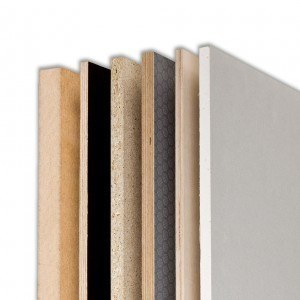How to mount a flat screen TV to a board wall
Thin building boards are very common in all construction. Most commonly, building boards are used in partitions dividing different spaces or as surface materials for load-bearing structures. Gypsum boards are also often used as a material for suspended ceilings and in fire protection of load-bearing or partitioning structures. Building boards include gypsum and gypsum fiber boards, wood fiber boards, plywood, chipboard and various interior boards. The strength and properties of the boards vary greatly. The strength of the plate surface and the mounting location of the bracket are also affected by the wooden or metal structures behind the plate surface, such as collars.
Future wall installations can be facilitated already during the construction phase of the partitions by reinforcing the suspension points designed for home electronics with two layers of gypsum board or horizontal joints and / or plywood behind the gypsum board. Of course, the reinforcement can also be done afterwards by dismantling the wall from the installation site. Reinforcing the wall is in place if there is reason to suspect that the flat screen TV stand could sometimes be subjected to impact loads, eg if someone intentionally visits the stand or tries to twist the stand from the wall. Remember that drywall fasteners usually only last as long as drywall as a building material! The duration of gypsum board is affected by e.g. humidity conditions during transport and storage and at the place of use. There are also differences in the durability of products from different manufacturers.
A flat-screen TV is such an expensive acquisition that sometimes the laborious wall reinforcement is in place, but Sormat’s anchors in this article, when properly installed, still carry the load of the most common flat-panel TV installations.
When installing on building board walls, you should always try to use the wooden or metal joints behind the board wall. The collars are usually placed at 600 mm intervals. To determine the locations of collars, there are special structural sensors on the market that often also indicate the locations of electrical wires. If the collar happens to be in place, then a standard domed wood screw is used to attach the racks. But as is usually the case, at least some of the attachment points do not hit the joists – and then fasteners suitable for the plate walls are needed!
Sormat’s All-Metal Anchors TOLA and MOLA to the rescue!
If the location of the flat-screen TV wall bracket is between the collars, the brackets are mounted on the plate walls using all-metal plate anchors such as Sormat’s TOLA and MOLA. After measuring the correct position of the stand, make sure that there are no electrical wires behind the drilling point.
For the all-metal MOLA sheet metal anchor, a hole is drilled in the wall according to the installation instructions in the product package. The minimum and maximum plate thicknesses are defined for the MOLA anchor. The anchor is installed in the hole and pre-tightened with a PH2 / PZ2 screwdriver or special Molly pliers available from hardware stores. After pre-tightening the anchor, the screw is removed, the wall bracket is aligned, the screw is installed through the mounting holes in the bracket back to the anchor and tightened. Electroplated MOLA is intended for use in dry interiors. 13 mm for single and 26 mm for double gypsum board. The distance between the anchors between the collars should be at least. 200 mm.
The all-metal TOLA plate anchor is suitable for use in 10 – 70 mm thick plate walls with a cavity behind it. For the TOLA, a 13 mm hole is drilled through which the metal counterpart of the anchor is inserted by means of plastic ribs. The collar portion of the plastic ribs is carefully tightened to the front surface of the plate and the extra plastic ribs are cut off flush with the wall. The mounting holes for the bracket are aligned and the bracket is secured with the M6x62mm bolt supplied with the anchor. Electrogalvanized TOLA is intended for use in dry interiors. If the TOLA anchors are between the joints, the distance between them must be at least 200 mm.


